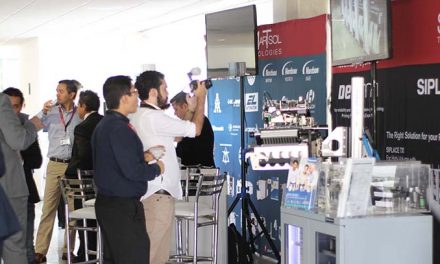Imagining the Hospitals of the Future
By Jim Warren, Business Unit Director, Jabil Nypro
Oct 09, 2017
First published on Jabil’s blog – click for more insights or to subscribe
Imagine a hospital where nurses, doctors and staff had what they needed, where they needed it, all the time. Now imagine that hospital was smart enough to track inventory on its own, replenish when needed and even alert other hospitals of available inventory on critical items. Neat, huh? And sure, RF tags are useful but expensive and perhaps should only be used in high-value items, but in an emergency, gauze and other seemingly simple items can be high-value. And what about equipment that needs to be ready and working, not just located.
In these days of hospitals cutting costs, growing demands for new healthcare, and a greater focus on patient outcome, I was curious to re-imagine how technology could free up staff to put more time into patient care and less into counting and ordering. In my role as a Business Unit Director for Nypro, I get the opportunity to meet lots of customers and hear their frustrations, but I also get to share their fascinations. When they finish telling me their challenges, I like to ask them to imagine their utopia. It is interesting to hear that many of their frustrations can be resolved out with existing technology. All they need is a partner to help guide them through validation and implementation.

So back to the idea of a smart hospital, or smart network of hospitals. We’ve established that RF tags on disposable items are costly but what about using those to manage equipment? How about we use those and the hardware infrastructure to help nurses and doctors find what they need when they need it. Imagine an inbound ambulance that has a trauma patient in need of a specific piece of equipment; what if precious moments could be saved with a quick analysis of equipment availability and readiness?
And what of the smaller, less expensive items. Here we can bring in another piece of tech that has become much sharper and cheaper over the years. Camera technology has progressed to shockingly lower costs but also incredible clarity. Imagine a stock shelf that has a camera take pictures of what is there, who took it out as they entered the room, and decide when an order needs to be placed. The same can be done with a ‘compare and contrast’ of a surgery suite before and after a procedure. Imagine a cool robot voice saying, “Doctor, it seems we are short one set of forceps…”
Finally, as I mentioned in a previous blog, MRSA and other superbugs need to be managed and using intelligent RFID to verify an instrument has been through sterilization is a great start. Another step could be to integrate a scan of the operating suite to locate and dismiss suspect equipment. It would be ideal to integrate such a system into the base device to avoid operating without the sterility process being complete.
Imagine multiple hospitals and municipalities could coordinate resources and capacity during a mass trauma event. Some of this is already done but it requires significant human resources to count, manage and plan; a Smart, data driven strategy would free up staff for patient-facing functions.
All of this is fascinating to consider, and made more exciting because the technology required already exists and simply needs the right team to put it all together. The building blocks are there, who wants to architect the hospital of the future?













